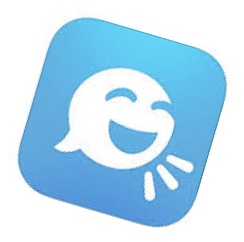With virtual and hybrid learning, it can be challenging to keep student engagement alive and formatively assess student learning in the moment. Here are two strategies I use to not only increase student engagement, but quickly monitor student learning and identify any misconceptions. These strategies can be used in all content areas as well as all grade levels.
I recently worked with a teacher on revamping a lesson to increase student engagement. Before designing the lesson, I asked her to describe what student engagement looks like and sounds like in her own classroom. Doing this seemed simple, but it uncovered key values that were important to her and helped bring more clarity to her vision.
Have you seen the NY Times picture prompts? These make a great quick-write-a-day.
My commute is usually between thirty to sixty minutes each way every day. I've found this is a great time to get in some professional learning time. I subscribe to several educational podcasts. Each day I select one of the latest podcasts or find a speaker on YouTube. Here are a a couple I highly recommend.
Use the Tellagami app to achieve this learning goal: I can create a recording of a report on a book or article I have read independently, giving important details and speaking in complete sentences.

Making QR Codes is easy! Follow our 5 simple steps with a QR Code Application or website generator!
Pokemon Go has become a global phenomenon in just a few weeks. I decided to play to learn with the intention of investigating any potential for classroom use. So, I will start with a confession: I'm addicted.
First, I love how the game is making me aware of how I can direct my own learning. I had to seek out the critical knowledge needed to play the game. Quickly, I found and applied the basic rules of the game. At one point, I unexpectedly ran out of Pokeballs and had to figure out how to get more. Of course, I googled it!
Maximize summer learning time by capitalizing on curiosity and personal interests. Here are some great ideas for parents and educators to help students grow dendrites during June, July, and August. Enjoy!
Using Youtube in the classroom is a powerful tool for student engagement and authentic instruction. I love to use Youtube with adults and students to increase the complexity of thinking in a unique way. Here is an example to use in your classroom this spring!
Tween Tribune, powered by The Smithsonian Institution, publishes an online collection of news articles for K-12th grade students and teachers.
Articles can be found on four sites:
Social media has become a necessity more than a luxury these days. We find out breaking news, friend’s life events, and tons of new information daily. From Facebook to Instagram, social media floods the world. So why not use this to the educator’s advantage?
Technology is a great motivational tool that can ensure your learners keep reading and learning all summer long. Here are some ways you can create virtual literature circles for your children.
Literature circles are small student-led discussion groups.
I learned about this one from my son, who is in college. Since then, I use this app on a daily basis! You can use an iPad, Mac or Windows computer, or an iPhone/iPod Touch for this app.
Spelling Anagrams
Find the hidden word in the fastest time. Race against time to find the computer's hidden word, and solve the anagram. Anagram selects a word and jumbles up its letters. Players simply have to find the word in the time limit by reordering the letters.
Words With Friends
This is an app for Android, iPhone, and iPad users. Very addicting digital Scrabble. (Just ask Alec Baldwin!)
Developing Talkers
From the Children’s Learning Institute Downloadable lesson plans, children’s literature sticky questions, and much more!
Flockdraw.com
Students draw a picture of the word, label it, and draw a brief description of how it is used.
Word Clouds
Create a word cloud to:
Free Technology for Teachers
Free Technology for Teachers provides teachers with ideas for using free technology resources in their classrooms.
Storyline Online
Since 1993, SAG Foundation has been committed to inspiring children to read and write. Through our many diverse and innovative programs we continue to champion children’s literacy issues -‐ and with unique partnerships and collaborations we are able to make our programs a reality. This obviously could not be achieved without the support of thousands of (SAG) actors across the country. More at www.sagfoundation.org.
Do your students have their own website? (Yet?)
A portfolio of work is a collection of items that shows competencies and growth. It is assembled over time when students select pieces and reflects on them.
Students need models of fluent reading and lots of practice reading with expression, phrasing, accuracy, and adjusting rate to match the purpose for reading.
Personal Narratives
A personal narrative is an expressive literary piece written in first person that centers on a particular event in the author’s life and may contain vivid description as well as personal commentary and observations.
How does your web presence showcase your class’ talents and accomplishments?
In Six Words...Public Relations...Information...Web 2.0 Interactive.
TumbleBook Library is an online collection of animated, talking picture books which teach young children the joys of reading in a format they'll love. www.tumblebooks.com/library
Many public libraries have made the resource available on their website for library members. Schools may purchase a site license for a minimal fee.